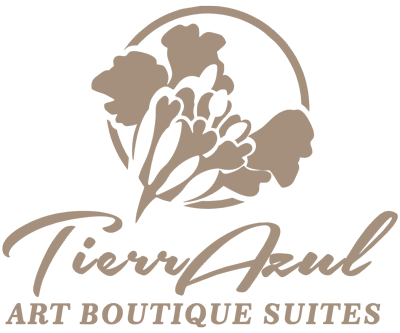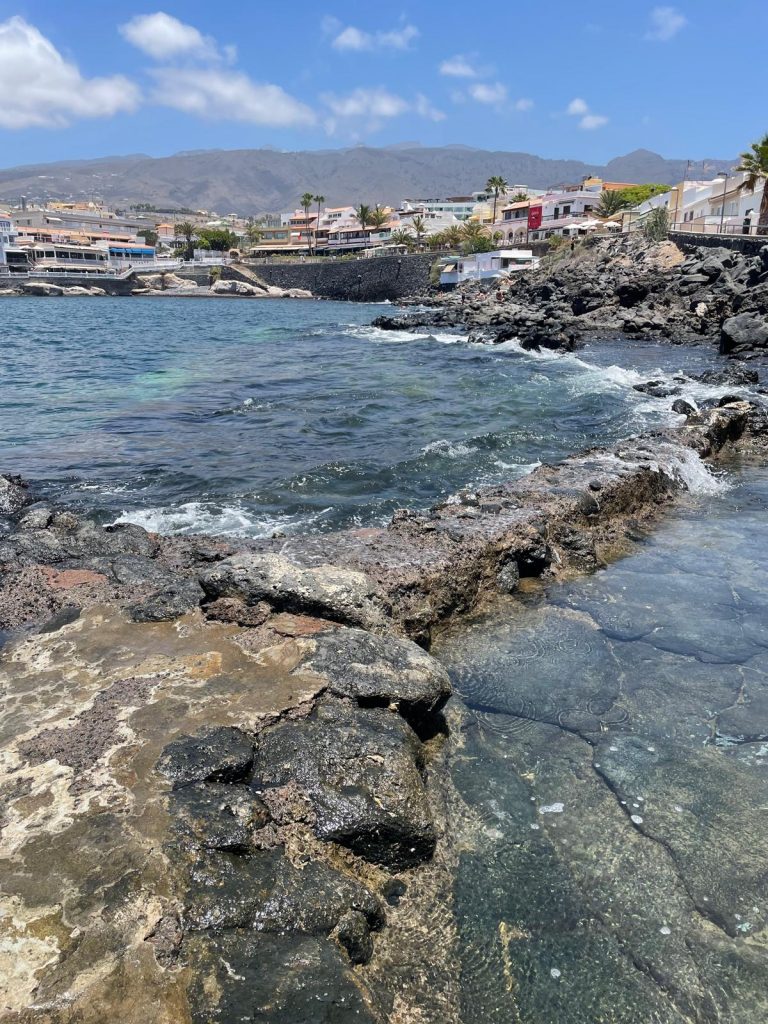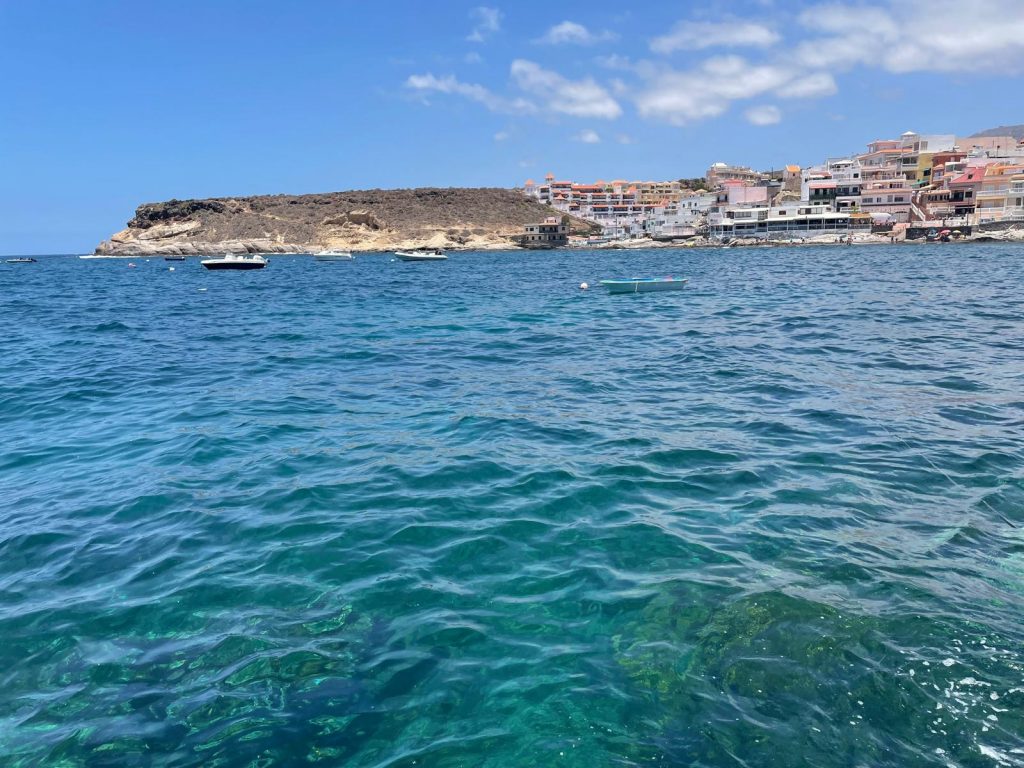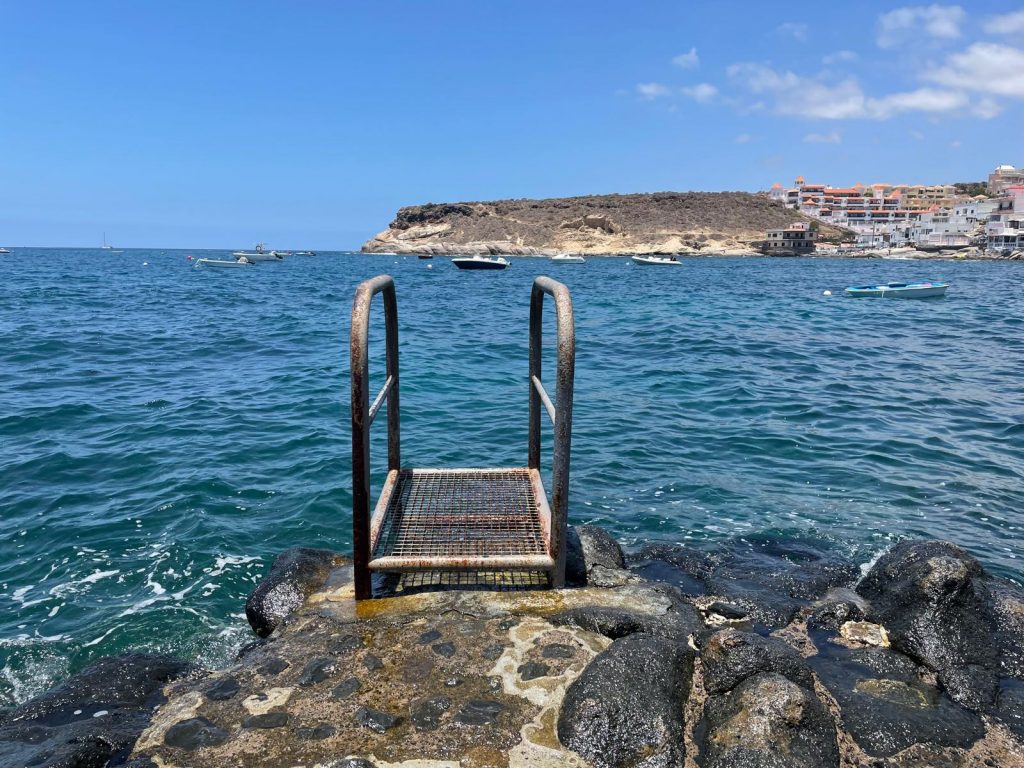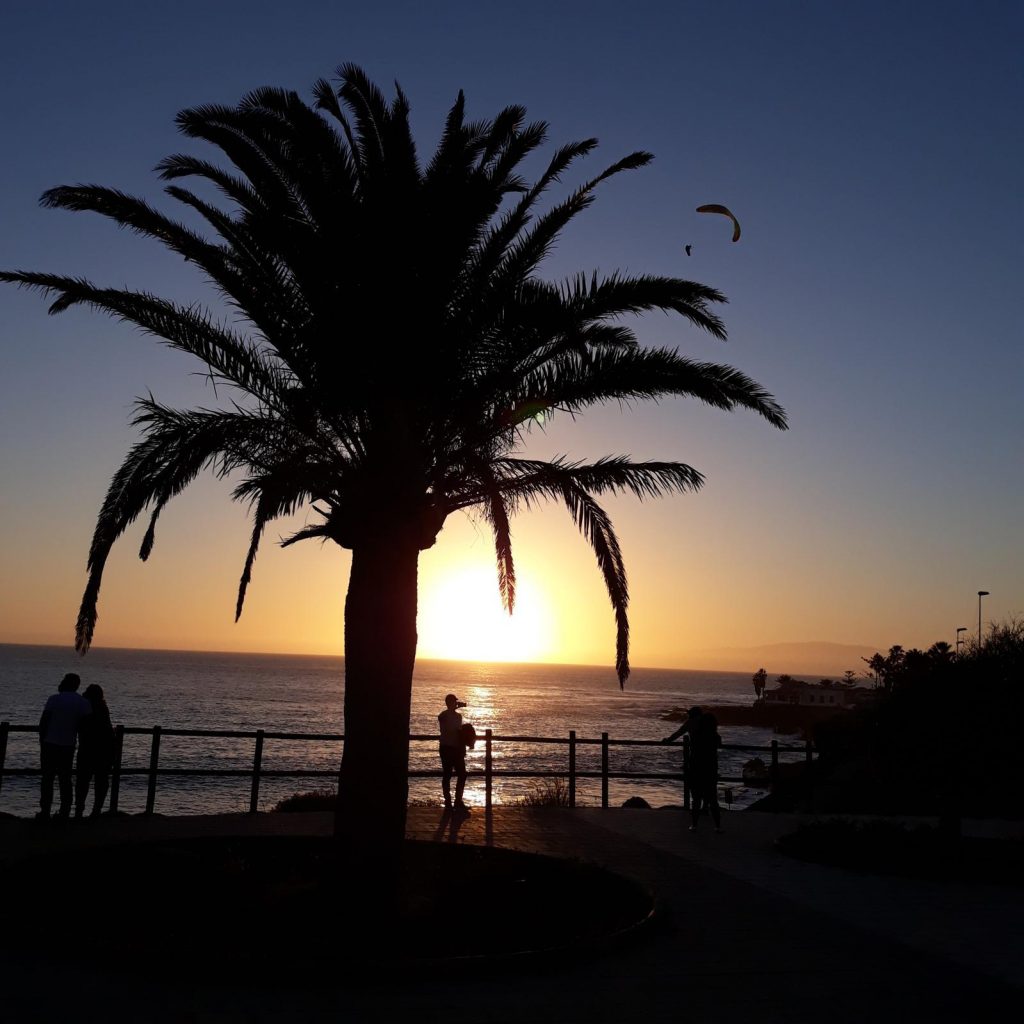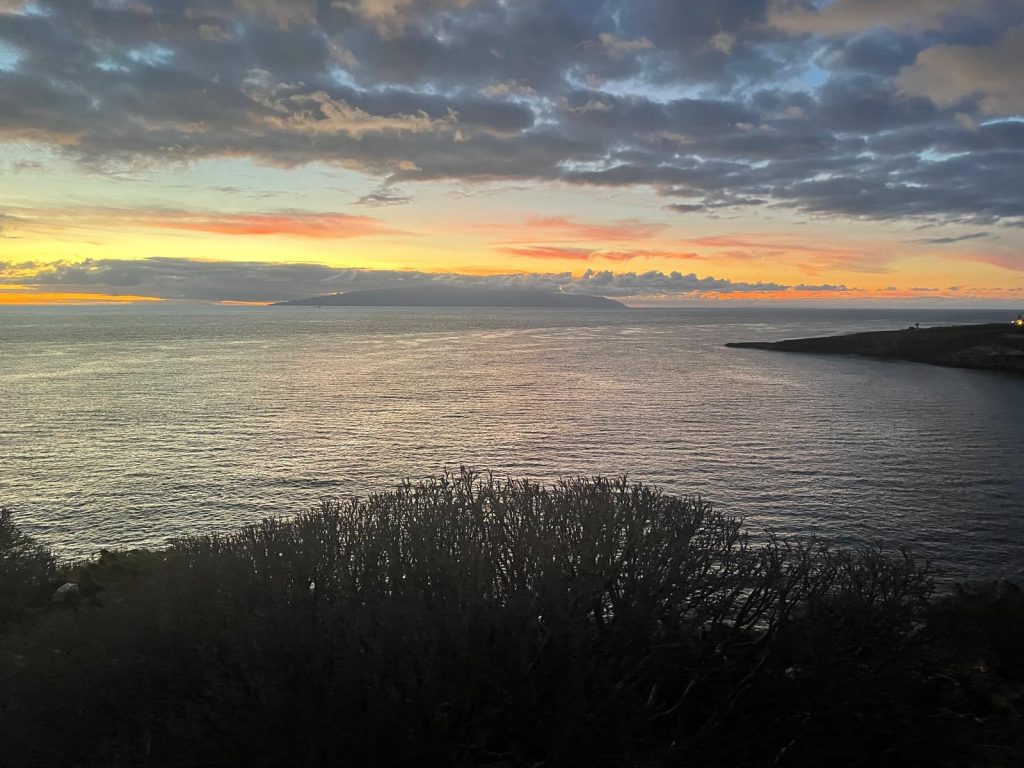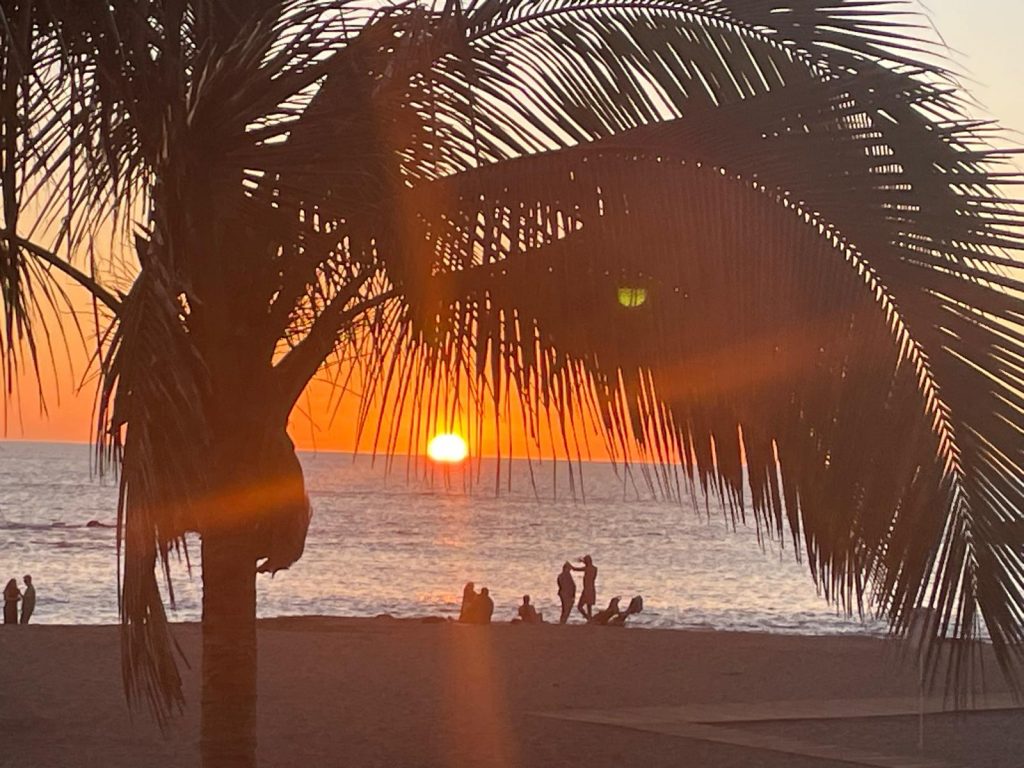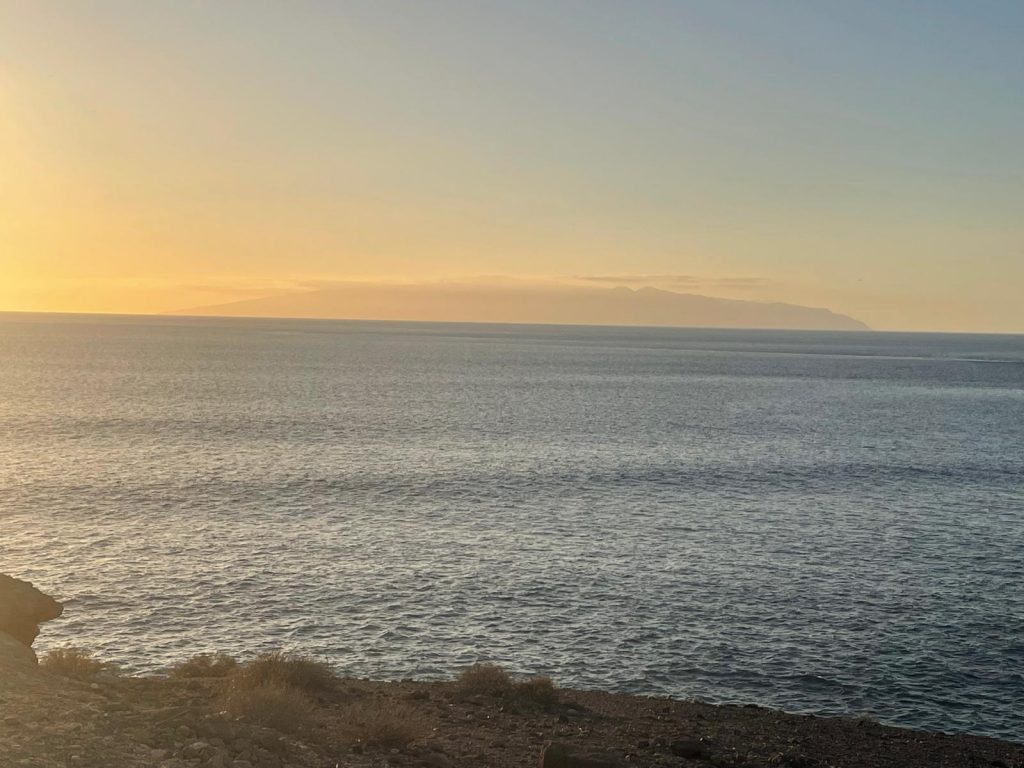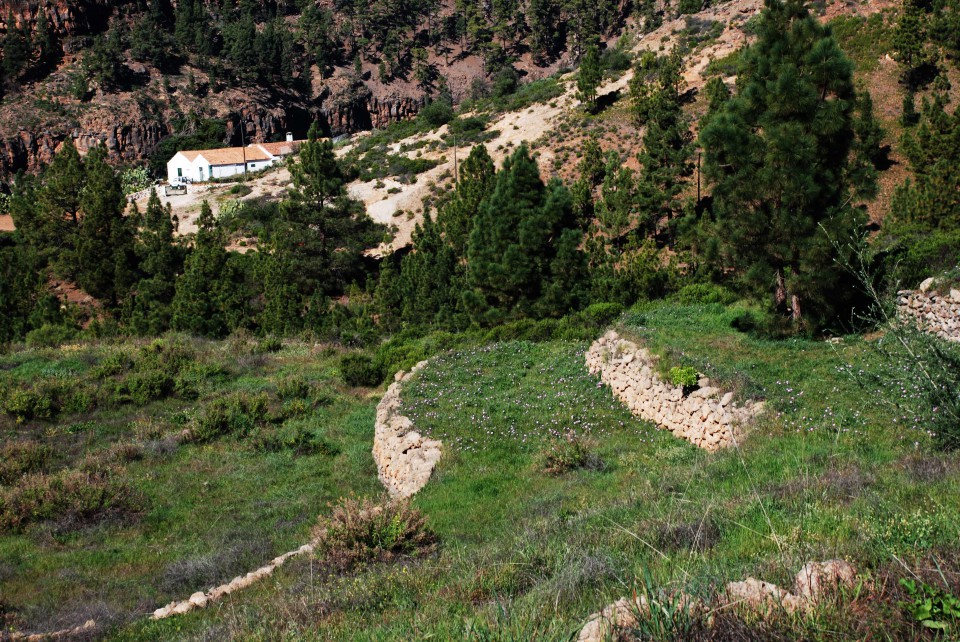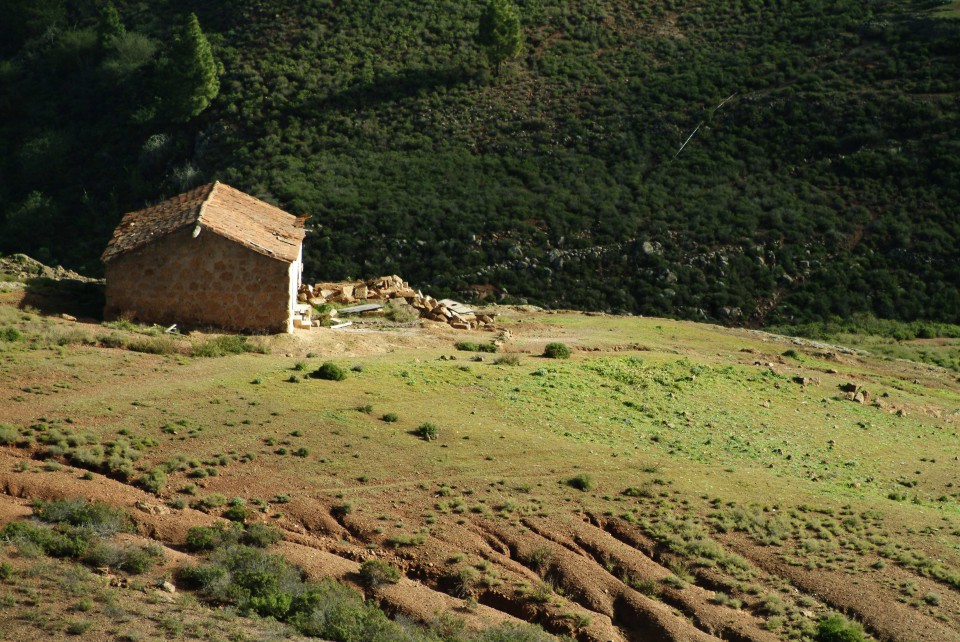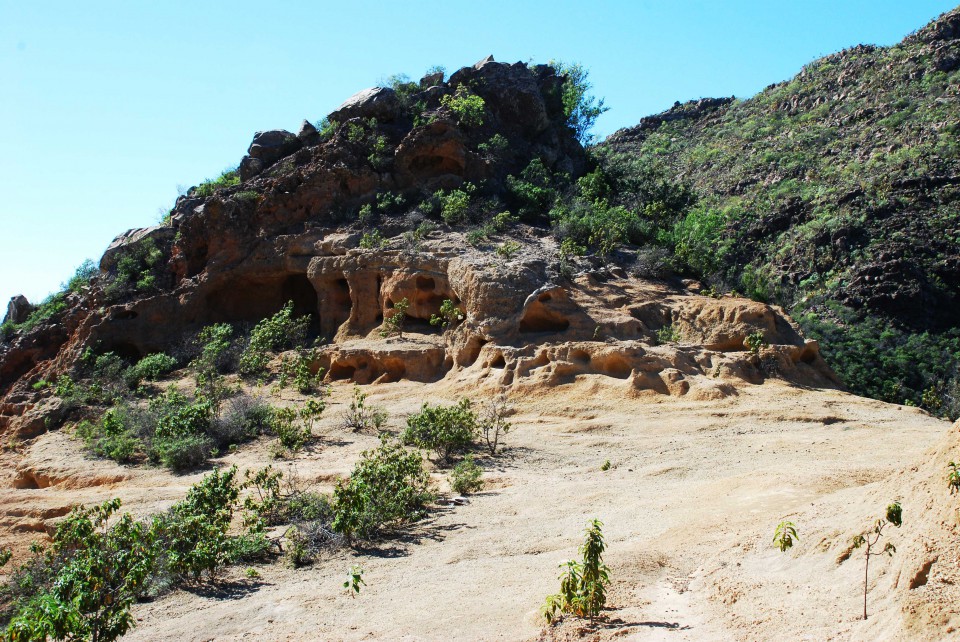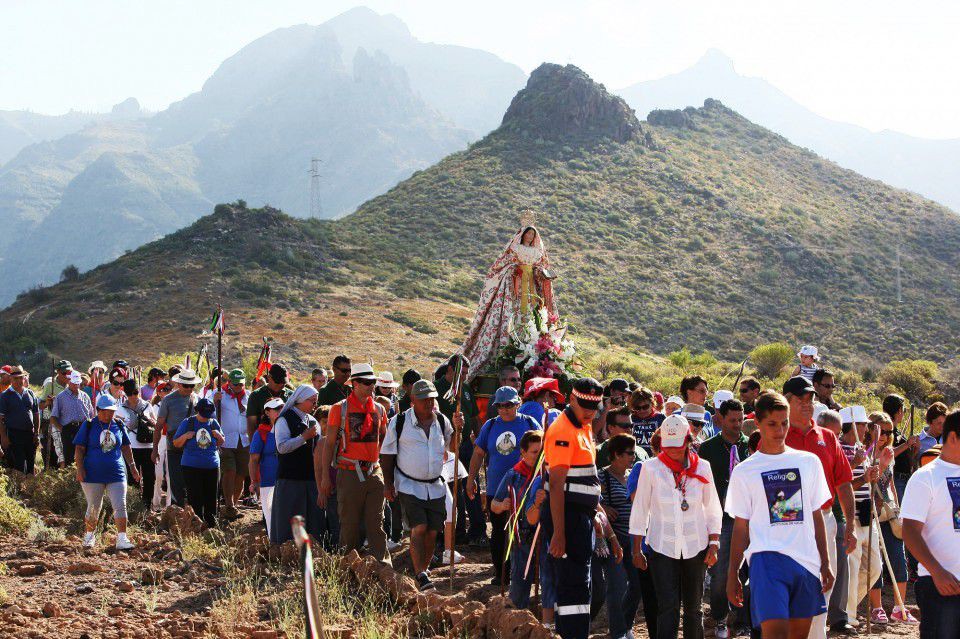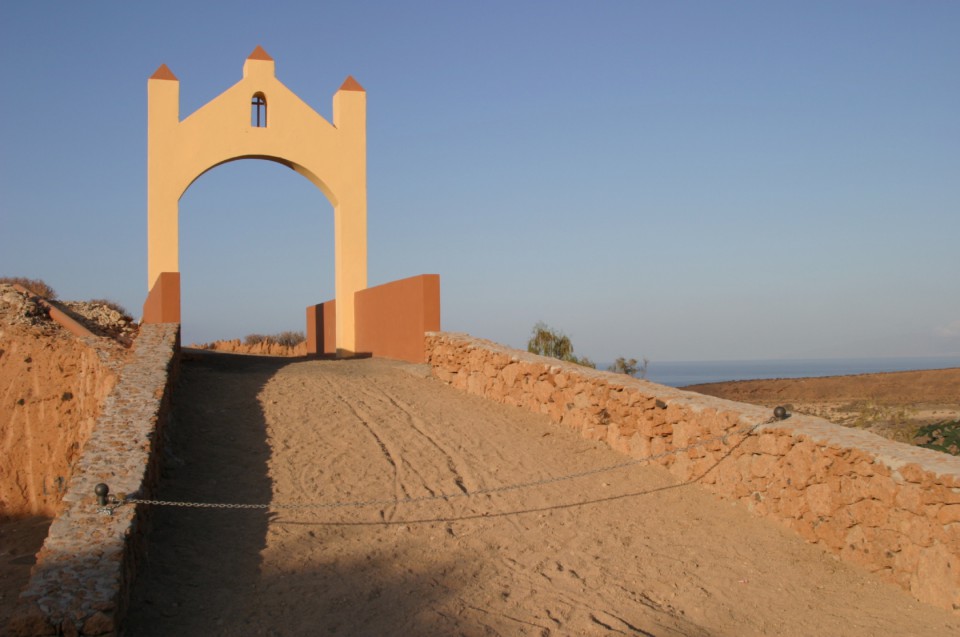Discover Adeje
Tradition, beaches, natural landscapes, wonderful trails, and the most spectacular sunsets you can imagine… Yes, we’re talking about Adeje, a municipality full of color, diversity, flora, and landscapes that will not leave you indifferent.
We want to show you some of its hidden gems so that your visit to Tierra Azul Suites Art is as complete as possible.
Travel with us through ADEJE.
We begin with its
magnificent beaches
Puntos de interés
Magical corners, steeped in history and tradition. Stroll through its streets, discover its most emblematic and historic places.

The watering hole was the place where cattle and other animals stopped to drink and regain their strength on their way through La Boca del Paso. This road, which crosses the Chabor area—formerly populated by pine trees—led to the houses of Los Picos and the farms of Los Llanos, where dry farming, with crops of wheat, barley, and fruit trees, was the main activity. From La Boca del Paso, you can enjoy panoramic views of the coast of Adeje and Arona, as well as the Barranco del Infierno Special Nature Reserve.
In addition to its agricultural and livestock function, this road connected Adeje with La Quinta and Taucho. Its name comes from the narrowness of the entrance passage for animals, forming part of the old royal road to Las Cañadas and the north of the island. It also connects with El Aserradero, an area dedicated to the production of wood for the sugar mill, and from where channels carved into the rock carried water to the terraced crops.
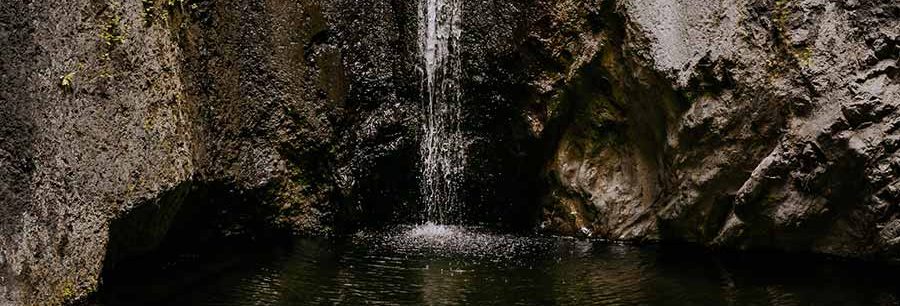
In pre-Hispanic times, the Guanches settled in areas such as Barranco del Infierno and Barranco del Rey, taking advantage of caves and water to survive. After the conquest, the population moved to the midlands, between 400 and 700 meters above sea level, which were more suitable for agriculture, although the southern slope of Tenerife was always less populated due to its aridity. Towns such as Taucho, La Quinta, Tijoco Alto and Bajo, and Ifonche were established to the north of what is now the Barranco del Infierno Nature Reserve. Initially, the land was used for grazing, with agriculture being introduced later due to the lack of water resources.
With the acquisition of the lands of the Adeje River by Pedro de Ponte, a canal was built to take advantage of the water from the ravine, the beginning of which can still be seen near the waterfall in La Tornadera. This canal carried water to the vicinity of Molino Viejo, supplying Adeje until the mid-20th century, although it suffered continuous breaks and was replaced by another wider irrigation channel. In the mid-16th century, the sugar mill was installed in Adeje, somewhat later than in other areas of the Canary Islands, marking the beginning of sugar cane cultivation in this part of the island.

The Casa Fuerte de Adeje, declared a Site of Cultural Interest in 1986, was built around 1556 by Pedro de Ponte with royal authorization to defend the coast from pirate attacks. For more than three centuries, this palace-fortress became the political, economic, and social center of the jurisdiction of Adeje, serving as a symbol of the Ponte family’s feudal regime. Although initially conceived as a defensive bastion, it also functioned as the residence of the family and later of the administrators and employees of the Marquises of Bélgida.
Linked to the sugar industry, the Casa Fuerte housed one of the most important sugar mills in Tenerife. Its construction began in 1554 and it had a mill, a sugar mill and a purifying house, where water was the main driving force for crushing sugar cane. For decades, it generated substantial income from the export of sugar to Cadiz and Antwerp, although over time it declined due to competition from Brazilian sugar, pirate attacks, and natural disasters. From the 17th century onwards, agricultural production diversified into wine and cereals, maintaining the Casa Fuerte as a historical landmark in Adeje.

The current Casa Sindical, now home to the Canarian Library and the Adeje Photographic Archive, has a history closely linked to the social life of the municipality. At the beginning of the 20th century, it housed Adeje’s first public telephone, which was first installed in the Casa Fuerte and moved here in the 1920s. Over time, this building became a children’s dining hall in the post-war period, a venue for community celebrations and, in 1959, the headquarters of the Hermandad Sindical de Labradores y Ganaderos (Farmers and Ranchers Union), which later became the Local Agricultural Chamber until its closure in 1993. After a decade of disuse, in 2003 it regained its value as a cultural and heritage space.
The building is a fine example of traditional Canarian domestic architecture, with a central courtyard, rooms distributed around it, and characteristic features such as the two-story barn and the tea roofs with mortar cake. Built between the late 19th and early 20th centuries, it reflects the adaptation of rural architecture to the needs of the time and remains today a symbol of the historical and cultural memory of Adeje.

The Franciscan Convent of Adeje, declared a Site of Cultural Interest in 1986, was founded on August 10, 1679, under the patronage of Our Lady of Guadalupe and Saint Paul, thanks to the initiative of Juan Bautista de Ponte Fonte y Pagés, the first Marquis of Adeje. In its early days, it housed eight or nine friars of the Franciscan order, but over time it lost members until there were only three religious left in 1802. After the secularization of 1835, the convent was gradually demolished and became the seat of the Town Hall, with only the church remaining, which was acquired in 1988 and restored in 1991.
The church, with a rectangular floor plan, is notable for its wooden coffered ceiling, a Baroque triumphal arch in the main chapel, niches, confessionals, and a wooden choir, as well as the marquis’ coat of arms on its main façade. The convent also had a vegetable garden, essential for the friars’ self-sufficiency, where water played a fundamental role. Thus, the complex represented the three dimensions of monastic life: the divine (church), the human (cloister), and work (orchard). Its history was even reflected in literature, such as in Agustín Espinosa’s Romancero de los pueblos del sur de Tenerife (Ballads of the Villages of Southern Tenerife), which mentions a lay brother named Lucas, linked to the Adeje convent.

El Molino de Abajo, located on Calle Los Molinos in Adeje, is one of the earliest examples of a horizontal or waterwheel-type hydraulic mill, which is easier to install as it does not require complex gears or transmission systems. It was built in the 16th century by the lords of Casa Fuerte and later sold to Francisco Trujillo Clemente in 1897.
This mill operated until the 1950s and used a horizontal wheel with a waterwheel system. Its hub is still in good condition today, bearing witness to the important role these infrastructures played in the agricultural and economic life of Adeje for several centuries.
In Adeje, water came from Barranco del Infierno through an irrigation channel that ran through the village from north to south. Residents used it for domestic consumption, and women used it to wash clothes and utensils. However, this system posed health risks, as the water could become contaminated when passing through flour mill turbines.
To improve quality and access, a project begun in 1933 was completed in 1938, installing four public fountains: on the corner leading up to the Casa del Cura, on Calle Nueva, on Calle de la Paloma, and in the Plaza de la Cruz del Llano. These fountains regulated the supply at specific times and prohibited misuse, ensuring a more convenient and secure supply for residents.

The Church of Santa Úrsula, declared a Site of Cultural Interest in 1986, originated as a small chapel that was enlarged in the 16th century by Pedro de Ponte, becoming a single-nave church. In 1530, it was elevated to parish status and, in 1560, it obtained the right to have its own parish priest. During the 17th century, a period of greater economic prosperity, it was enlarged with a second nave separated from the original by three semicircular arches.
The Casa Fuerte de Adeje played a fundamental role in sustaining the parish, taking care of its maintenance, water supply, and financing masses and processions stipulated in the Ponte family’s wills. Thus, the Church of Santa Úrsula was not only a religious space but also a reflection of the seigneurial power and the link between devotion and community life in Adeje.

The Fuente de los Tres Chorros fountain, built in 1890 after the abolition of feudalism, was one of the first public infrastructures in Adeje. It was located on Calle de Los Molinos, the road that descends from Barranco del Infierno, as part of the improvements to the town’s services and works at the end of the 19th century.
This hydraulic system allowed water to be channeled from the ravine, becoming an essential resource for the residents. From the fountain, the water was collected in pots and transported by donkey to the houses, a task in which the water carriers, women who played a key role in daily life and in supplying the families of Adeje, also stood out.
In 1932, the Heredad de Aguas de Adeje (Adeje Water Authority) was established as an irrigation syndicate, in accordance with the Water Law of 1879. Its purpose was to organize and manage the shared use of water from the Barranco del Infierno ravine, which had been used to irrigate the municipality’s land since time immemorial. The water was channeled from the waterfall in the ravine to the mill and from there to a pond where it was distributed among the residents to irrigate their farms.
The first Governing Board, chaired by José Esquivel Alayón, established an irrigation system based on four shifts or “adulamientos” called Morales, Rueda, Lomo, and Valito, each comprising some 90 farms. To this end, agronomic measurements were taken, measuring tanks were built, and the canals were modernized, thus ensuring a fair and more efficient distribution of water, a vital resource for Adeje’s agricultural economy.
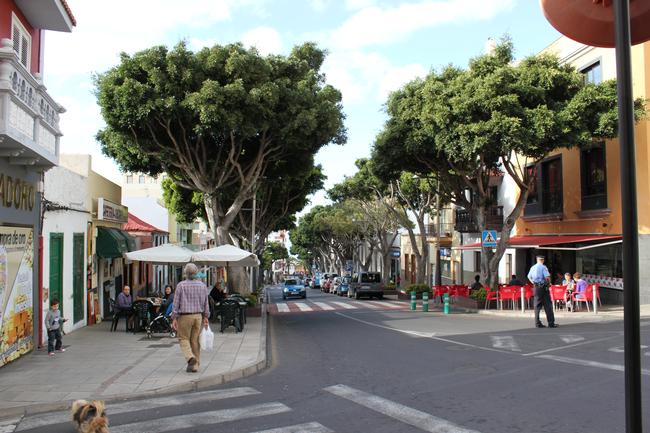
The laurel trees on Calle Grande in Adeje have their origins in the Tree Festival celebrated on December 10, 1911. The initiative was promoted by Dr. Manuel Fernández Piñeiro, a doctor in the municipality at the beginning of the 20th century, founder of the “Unión y Cultura” Society, and an active promoter of social and cooperative projects related to water. Teachers such as Luisa Tacoronte and Fermín Fraga, together with their students, participated in the planting in a solemn ceremony that included a civic procession, music, and the tree anthem.
The trees came from the provincial nursery and were transported free of charge by the steamship Carmen, owned by Messrs. Hamilton. The Tree Festival continued to be celebrated in Adeje until at least 1916, becoming a tradition that left behind the emblematic laurel trees that still adorn Calle Grande, also known as Calle de la Iglesia or Calle Dr. Fernández Piñeiro.

The public wash houses in Adeje were designed in 1936 on a plot of land located on Camino de los Molinos, in the upper part of the village. They had 28 wash basins and four stoves with boilers for disinfecting clothes and preparing bleach. The building, constructed with limestone walls and concrete roofs with metalwork, had natural ventilation through windows and openings in the roof. The budget for the work amounted to 7,704.68 pesetas and was drawn up by the municipal surveyor Manuel Morales.
These facilities were in operation until the late 1960s, when they were demolished to build a pond. During their final years, they were also used as a slaughterhouse. As a memento, the cross installed in the adjoining pond is still preserved, placed there after a neighbor’s accident in the old wash houses, a space that was part of the daily and community life of Adeje.
In the 16th century, cereal cultivation in Adeje was essential to supply the new population, leaving its mark on the landscape with terraces, threshing floors, and granaries. The water from the Adeje River was used not only for irrigation and the sugar mill, but also to power the water mills that produced gofio, a staple food in the Canarian diet. There were four mills in the municipality: two on Calle de los Molinos, one in La Concepción and another in La Hoya Grande.
The Molino de Arriba, located in Agua Pie, is a rare example of a vertical mill or watermill in the Canary Islands. Built by the lords of the Casa Fuerte and operated on a leasehold basis, it was sold in 1897 to Francisco Trujillo Clemente, whose descendants still own it today. It operated until the 1950s, with Berta Trujillo Trujillo being the last miller. Production was regulated by strict rules set out in the Casa Fuerte Directory, which supervised the work of the millers.
Network of municipal trails
Adeje promotes sustainability policies that highlight the value of its natural environment and forest areas, encouraging the responsible use of water, energy, and resources. This commitment is reflected in the network of municipal trails, which recovers and promotes part of the natural and ethnographic heritage, inviting residents and visitors to enjoy nature in a respectful way.
There is a wide variety on offer: from short trails (PR) such as the Camino de Teresme, Boca del Paso–La Quinta, and the Camino de Ifonche, to local trails (SL) such as the Roque del Conde and the Camino de la Virgen. In addition, Adeje is part of the Anaga–Chasna Long Distance Trail (GR 131) on its Vilaflor–Adeje section, linking sea and mountains in an ideal setting for hiking and connecting with the history and rural tradition of the municipality.
Boca del Paso – La Quinta
From Boca del Paso, this variant of the trail leads northwest to the old hamlet of La Quinta, whose origins date back to the 16th century. Along the route, traces of the intense agricultural activity in the area can still be seen, such as threshing floors, terraces, stone and wooden channels, cisterns, and remains of peasant dwellings.
The route ends at the Hermitage of Santa Margarita, built at the end of the 16th century, which houses images of Santa Margarita de Antioquía and Santa Lucía. Next to it are a large threshing floor and old washing places. During the 16th and 17th centuries, the area of the current hamlets of Taucho and La Quinta was known as Taucho, a name that changed at the end of the 18th century when the lands passed to the Marquises of La Quinta Roja.
Duration: 30 min
Elevation gain: 94 m
Elevation loss: 119 m
Distance: 1.7 km
Type of route: Cross-country
Camino de Ifonche
This traditional path connects Ifonche with La Quinta, one of the oldest settlements in the region, and forms part of the Camino Real, which linked the highlands of Guía de Isora, Adeje, Arona, and Vilaflor. The route begins in the Protected Landscape of Ifonche, where pine forests blend with terraced fields cultivated on volcanic sand (jable). After overcoming the slope of the Barranco del Infierno, it enters the area of El Aserradero.
To the south lies the junction with the Camino de Teresme, which descends towards the town of Adeje, while the main route continues on to La Quinta. The trail is notable for its ethnographic, natural, and scenic value, as it crosses three Protected Natural Areas, offering a unique experience in contact with the island’s history and nature.
Duration: 2h 30min
Ascent: 523m
Descent: 627m
Distance: 6.4 km
Route type: Crossing
Camino de la Virgen
The Camino de La Encarnación, today known as the Camino de La Virgen, recalls the promise made by the people of Adeje to carry the Virgin each year in a rogation pilgrimage to her “old home,” in gratitude for the favors received. Its origin dates back to the 16th century, when Pedro de Ponte moved the image of the Virgin of the Incarnation from La Enramada to the church of Santa Úrsula to protect it from pirate attacks—an event that gave the path its name.
The route begins at El Portón, on the road from Fañabé to La Caleta, and descends towards the coast, crossing old farmland and the Tosca Colorada, where cart tracks can still be seen. Along the way there are three traditional stops: La Era, El Humilladero—the place where the Virgin is said to have appeared—and finally the hermitage of La Enramada, today known as the old hermitage of San Sebastián, the destination of the pilgrimage.
Camino de Teresme
The Camino de Teresme was once a key route for the inhabitants of Adeje, as it connected the coast with the midlands, facilitating both the movement of people and the exchange of goods. Today, the path begins at the Casa Fuerte gate, near the church of Santa Úrsula and the former Franciscan convent, both declared Sites of Cultural Interest. The trail ascends sinuously to Boca del Paso, a natural viewpoint offering spectacular views over Adeje’s old town, Chabor, and the coastal plain.
From there, the route continues along the Lomo de Las Lajas to El Aserradero, where it connects with the Camino de Ifonche. The path then climbs towards the area of Teresme, crosses the Barranco de El Dornajito, and links up with the track leading to the Las Lajas recreational area. Its historical importance is tied to the use of water and forest resources, as El Aserradero was once a site for irrigated farming and timber exploitation.
Duration: 6h 38min
Ascent: 1,951m
Descent: 153m
Distance: 16.1 km
Route type: Crossing
Roque del Conde
The Roque del Conde trail, also known as Roque de Ahiyo or Roque de Ichasagua, combines nature and history in one of Adeje’s most iconic landscapes. After a 2.5 km ascent reaching 1,000 meters above sea level, this volcanic rock, located within the Barranco del Infierno Special Nature Reserve, offers spectacular views over Adeje, Arona, San Miguel, Granadilla, Guía de Isora, and Santiago del Teide.
The cobbled path climbs along the eastern slope, crossing old cereal terraces in El Tablero, surrounded by cardoons and red tabaibas, until it reaches the plateau. Its name, Roque de Ichasagua, honors the Guanche mencey who resisted the conquerors after 1496 and who, according to chronicles, ended his life in Llano del Rey, present-day Arona.
Duration: 1h 44min
Ascent: 445m
Descent: 66m
Distance: 4.2 km
Route type: Out and back
Festivals and Traditions
The festivals and traditions of Adeje are celebrated throughout the year, although they reach their peak during the summer months. Each neighborhood pays tribute to its patron saints with processions, music, dancing, and popular gatherings that keep the customs and identity of the municipality alive.
Neighborhood Festivals
The neighborhood festivals of Adeje are celebrated throughout the year in honor of their patron saints, although most take place during the summer months. During this time, every corner of the municipality is filled with tradition, music, and a festive atmosphere.
San Sebastián
The festival of San Sebastián, co-patron of Adeje along with the Virgin of the Incarnation and Saint Úrsula, is celebrated every January 20th and is one of the most popular events in the south of Tenerife. In the historic site of La Enramada, thousands of people gather to honor the saint in a celebration closely linked to the region’s agricultural and livestock traditions.
Semana Santa
The Holy Week of Adeje has become a point of reference in the Canary Islands, standing out for the intensity of its celebrations around the passion, death, and resurrection of Christ. Its liturgical, devotional, and cultural events reflect both the town’s tradition and its growth, attracting numerous visitors and worshippers every year.
The Passion Play
The Passion Play of Adeje is an open-air theatrical performance that recreates the death and crucifixion of Jesus Christ. Every Good Friday at noon, more than 300 local residents, as amateur actors and actresses, bring this unique event to life on Adeje’s main street, the Calle Grande.
The performance includes iconic scenes such as the entry into Jerusalem, the Last Supper, the trial, the Way of the Cross, and the crucifixion. It can be experienced in person in Adeje or followed live on television and social media, making it one of the most important religious and cultural events in the Canary Islands.
Rogation of the Virgin of the Incarnation
The Rogation of the Virgin of the Incarnation is held every year on the second Sunday of Easter. From the church of Santa Úrsula, in Adeje’s historic center, pilgrims walk to the hermitage of San Sebastián in La Caleta, by the sea.
This pilgrimage fulfills a promise made more than 300 years ago to the town’s patron saint, when the villagers sought her protection from a devastating locust plague. Today, the rogation keeps alive both devotion and popular tradition in Adeje.
Craft Fair
The Adeje Craft Fair, organized by the town council since 2000, brings together more than one hundred Canarian artisans each year to showcase and sell their creations across different disciplines. It is usually held in the Plaza de España and Calle Grande in the historic center, although in some editions it has taken place in other locations.
In addition to the craft displays, the fair offers a lively cultural atmosphere with exhibitions, performances, and tastings of typical products from 10:00 a.m. to 8:00 p.m., making it a meeting point for tradition, art, and gastronomy in the heart of Adeje.
Corpus Christi
In Adeje, the celebration of Corpus Christi is distinguished by its traditional salt carpets, created by residents, associations, and the town council. For two days, the streets of the town are transformed into a colorful, ephemeral tapestry that blends art, faith, and popular tradition.
Adeje’s Romeria
The Romería of Adeje, celebrated in October as part of the Patron Saint Festivities, is a true explosion of color, gastronomy, and folklore. During these days, the town becomes a meeting point where tradition and devotion come together in a festive atmosphere that attracts both locals and visitors.
The celebrations are held in honor of the Virgin of the Incarnation, patron saint of Adeje, Saint Úrsula, the parish’s patron, and Saint Sebastian, the town’s co-patron. Processions, folk music, and the warm hospitality of the people of Adeje make this romería one of the most outstanding in the south of Tenerife.
Lustral Visit of Our Lady of the Incarnation
The Lustral Visit of the Virgin of the Incarnation commemorates the devotion to the original Marian image, which dates back to the early years after the conquest of Tenerife. The statue first appeared on the coast of La Enramada, where it was initially venerated, before being transferred to Garachico, where it became known as the Virgin of the Light.
Adeje Historic center
The Historic Center of Adeje, whose name means “mountain massif,” was once the residence of the mencey Axerax, or Gran Tinerfe, before the Spanish conquest. After colonization, the town took on the stately and religious character still visible today in the church of Santa Úrsula, the former Convent of Our Lady of Guadalupe and Saint Paul—now a museum of sacred art—and the Casa Fuerte, a 16th-century fortress symbolizing its historical past.
Adeje combines its rural tradition, with unique trails and landscapes such as the Barranco del Infierno—a Special Nature Reserve with a 6 km route ending at a waterfall—with the tourist boom of its coastline. Highlights include Costa Adeje, the Siam Park waterpark, and iconic beaches such as Playa del Duque, which have made the municipality one of the most important holiday destinations in Europe.
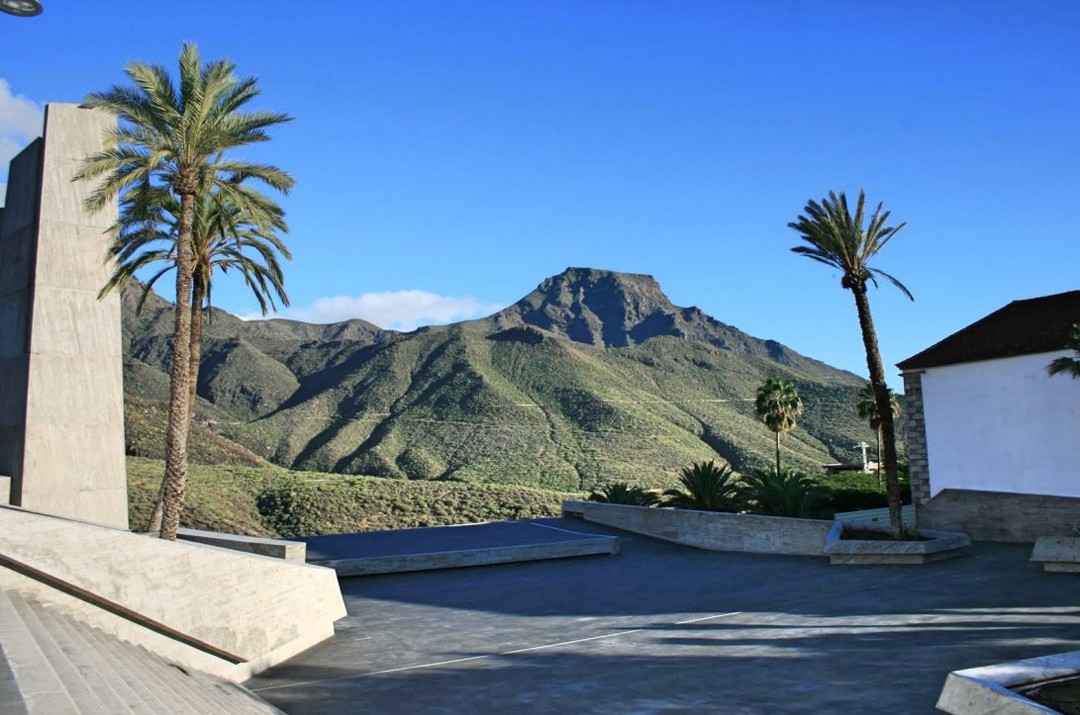
Source: adeje.es
This is just the beginning…
This is just a brief summary of what you can find in our fantastic municipality, Adeje. Please do not hesitate to contact us for more information.
